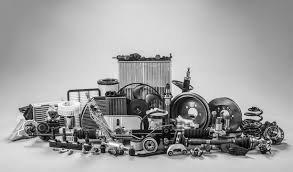The Lifeline of Heavy Equipment: Why Quality Parts Matter

Heavy equipment is the heartbeat of industries like mining, construction, quarrying, and crushing. These machines work in punishing environments—hauling tonnes of material, running for hours under load, and performing in all conditions. But no matter how powerful your machinery is, it's only as strong as the parts that keep it moving.
In this blog, we’ll break down why investing in quality parts for your heavy equipment isn’t just best practice—it’s essential to your bottom line.
1. Downtime Is the Real Cost
A $50,000 excavator or $200,000 crusher sitting idle because of a failed part is more than just a headache—it’s lost production, delayed deadlines, and wasted labour.
The number one cause of unexpected breakdowns? Worn, poorly-fitted, or low-quality replacement parts.
Choosing the right part—whether OEM or aftermarket—isn't just a purchase decision. It's risk management.
2. Not All Parts Are Created Equal
From hydraulic pumps and crusher liners to belts, bearings, and wear plates—every component plays a critical role. Substandard parts:
-
Wear faster
-
Fail under pressure
-
Compromise the performance of nearby systems
That’s why smart operations now focus on performance-based purchasing: choosing parts based on reliability, fit, and support—not just brand names.
3. The Rise of Performance-Grade Aftermarket Parts
Modern aftermarket manufacturers aren’t just copying OEM designs—they're improving them.
Top-tier non-OEM suppliers:
-
Reverse-engineer failure points
-
Use higher-grade alloys or composites
-
Extend wear life by up to 30–50%
-
Provide equal or better warranty coverage
This means you can often get better performance at a lower cost—especially in high-wear, high-replacement areas like screens, impact plates, crusher jaws, and pump seals.
4. Match Parts to Application
One-size-fits-all doesn’t apply to heavy equipment. The best suppliers will help you:
-
Select parts based on material type (e.g. iron ore vs. limestone)
-
Match wear parts to operating conditions (wet vs. dry, hot vs. freezing)
-
Predict maintenance intervals using real-world data
This proactive approach helps extend component life and reduce unexpected shutdowns.
5. Build a Relationship With Your Supplier
If you're sourcing parts from a catalogue without backup support, you're leaving value on the table. A quality parts supplier should:
-
Understand your equipment and industry
-
Offer expert advice on fitment and upgrades
-
Keep common spares in stock
-
Stand behind their products with warranty and service
Trust and communication matter—especially when you're under pressure to get machines running again.
6. Inventory Smarter, Not Harder
The best way to avoid panic buying? Stock smart. Work with your supplier to:
-
Identify critical spares
-
Forecast replacement intervals
-
Reduce emergency freight costs
Some suppliers even offer consignment stock or just-in-time delivery, reducing your cash tied up in inventory while ensuring fast access.
Conclusion: Your Machine Is Only as Good as Its Parts
Whether you're running a crushing plant, wheel loader, or screening unit, your operation depends on parts that fit right, last longer, and are backed by support.
The key isn't choosing between OEM and aftermarket—it's choosing a partner who understands heavy equipment, offers performance-grade components, and is there when it counts.
When you make smart decisions on parts, you’re not just maintaining machines—you’re protecting productivity, profit, and peace of mind.
